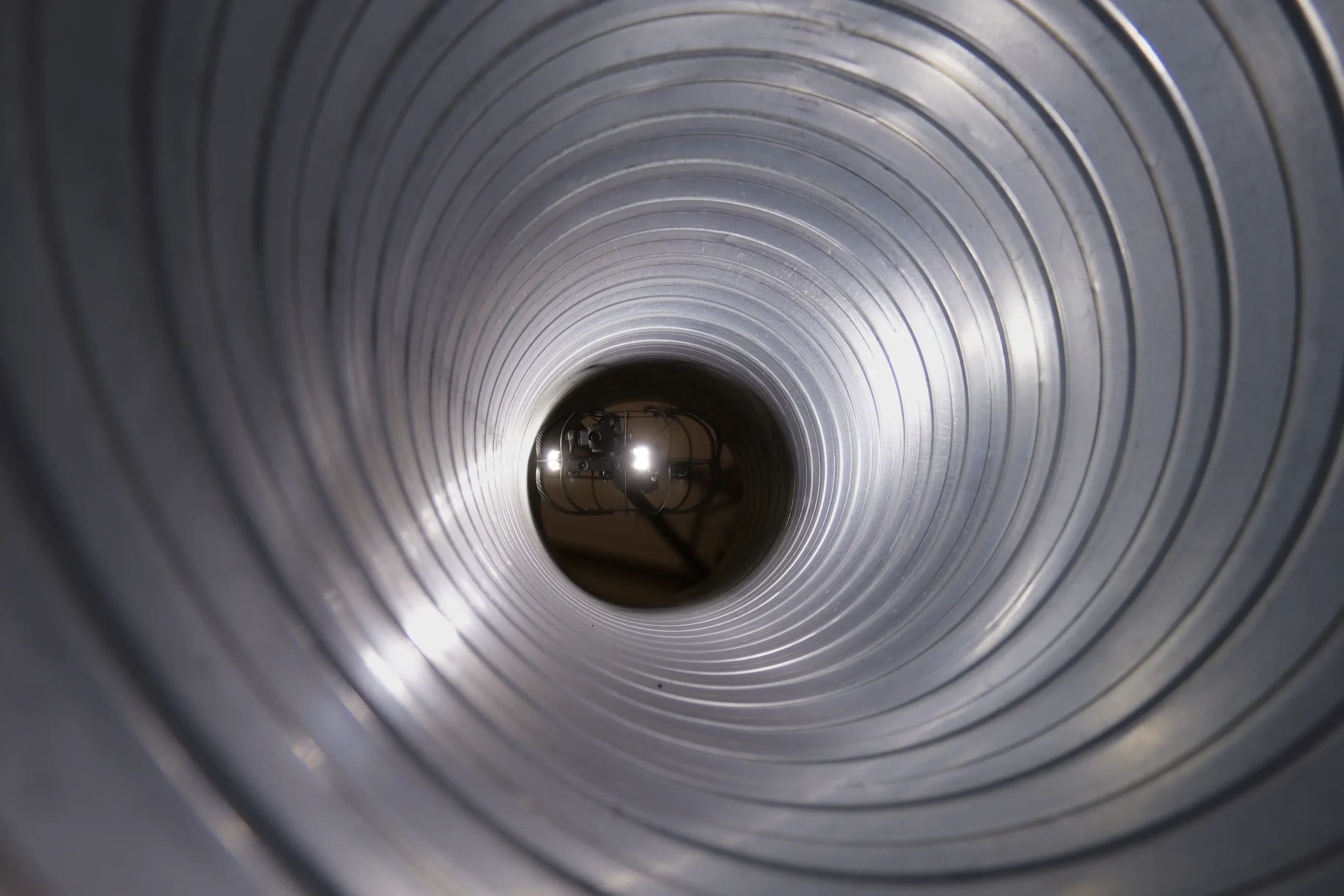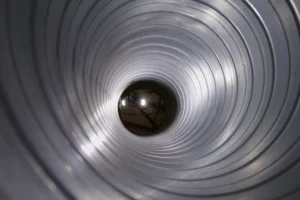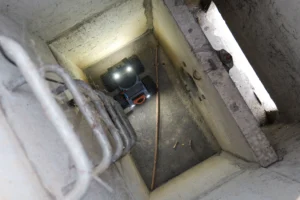Drones, an innovative solution for inspections
Drones have become essential for inspections, particularly in confined environments where human access is difficult or even dangerous. Whether inspecting industrial infrastructures, pipelines or confined spaces, these devices help to improve safety and efficiency. However, given the diversity of drones available, choosing the best solution is not always easy.
The flying drones and rolling represent two types of technology with distinct characteristics, adapted to specific missions. In this article, we'll compare these two options to guide you towards the ideal solution for your inspection needs.
A flying drone for high-altitude, hard-to-reach inspections
Maneuverability in tight spaces
The flying drones are distinguished by their agility and ability to operate in three-dimensional environments. They can reach hard-to-reach areas, such as tanks or chimneys, where their flight capacity enables them to inspect vertical surfaces or high spaces. Their maneuverability enables them to avoid obstacles while capturing images from multiple angles.
Limited autonomy and sensitivity to environmental conditions
Autonomy is often one of the main challenges facing flying droneswith flight times generally limited to 10 or 15 minutes. This can limit the capacity for continuous inspection, especially on longer missions. Operators have to schedule breaks to replace or recharge batteries, extending the overall time of the intervention.
In some environments, the presence of dust or airborne particles can affect drone stability. These factors must be taken into account during inspections. However, flying flying drones are well suited to these situations, especially in confined environments. Thanks to their advanced technologies, they can quickly adjust to variations in air currents and particles, enabling them to maintain a high degree of stability. This adaptability makes them particularly effective for operations in complex environments.
On-board sensors and cameras for precise inspection
The flying drones are often equipped with high-resolution sensors and cameras, up to 4K. These devices provide detailed images and video, often in real time, making it easier to identify structural defects such as cracks or signs of corrosion. Optical stabilization is an essential feature in
confined spaces, where the absence of GPS requires compensation to guarantee accurate data readings.
A rolling drone for horizontal and ground environments
Obstacle clearance and stability
The rolling dronesdesigned to travel on the ground, are particularly robust and stable in complex or damaged environments. They can negotiate ground obstacles such as debris or uneven surfaces, and can adapt to narrow spaces such as tunnels, ducts or sewers.
Their stability and ability to maintain a fixed position on the ground enable them to carry out precise inspections in environments where flying drones would have difficulty stabilizing.
Extended autonomy for long inspections
Unlike flying drones rolling drones have greater autonomy, capable of operating for several hours without interruption. This makes them ideal for extended inspections without having to stop frequently to recharge the batteries. Their ability to accurately measure distance travelled, thanks to built-in sensors, is also an advantage in environments such as pipelines, where precision is essential.
Sensors and close-up vision
The rolling drones are also equipped with high-definition cameras and sensors for precise data collection, just like flying drones. However, their ground-based positioning enables them to capture details closer to the surfaces being inspected, which is particularly useful for examining defects or anomalies at close range. What's more, they are often equipped with additional sensors, such as gas detectors, essential in hazardous or enclosed environments.
Which solution is right for your inspection?
Advantages of flying drones
The flying drones are particularly suitable for inspections requiring access at height, such as silos or air ducts. Their ability to fly in complex environments enables them to inspect vertical or hard-to-reach areas, offering a comprehensive view of infrastructures. What's more, they are ideal for missions where flexibility and speed of execution are a priority.
Advantages of flying drones
The rolling drones are better suited to inspections on the ground or in horizontal environments such as sewer systems or pipelines. Their stability on the ground enables them to carry out extended missions without interruption, and their robustness means they can navigate cluttered or damaged environments without difficulty.
They are also better suited to missions requiring close-up inspection, where their positioning on the ground enables them to detect structural defects more accurately. Their ability to operate for several hours without interruption represents a major asset for complex environments requiring close attention to detail.
Find the best solution for your inspection
The choice between a flying drone and a rolling drone depends on a number of factors, including the type of environment to be inspected, the duration of the mission and potential obstacles. For inspections requiring flexibility and access at height, flying drones are the best option. On the other hand, for ground-based or confined environments, where stability and autonomy are a priority, rolling drones offer a more reliable and efficient solution.
In all cases, prior assessment of the specific needs of each inspection is crucial to choosing the most suitable solution. Thanks to technological advances, today's flying and rolling drones enable safer, faster and more accurate inspections, while reducing risks for operators.




